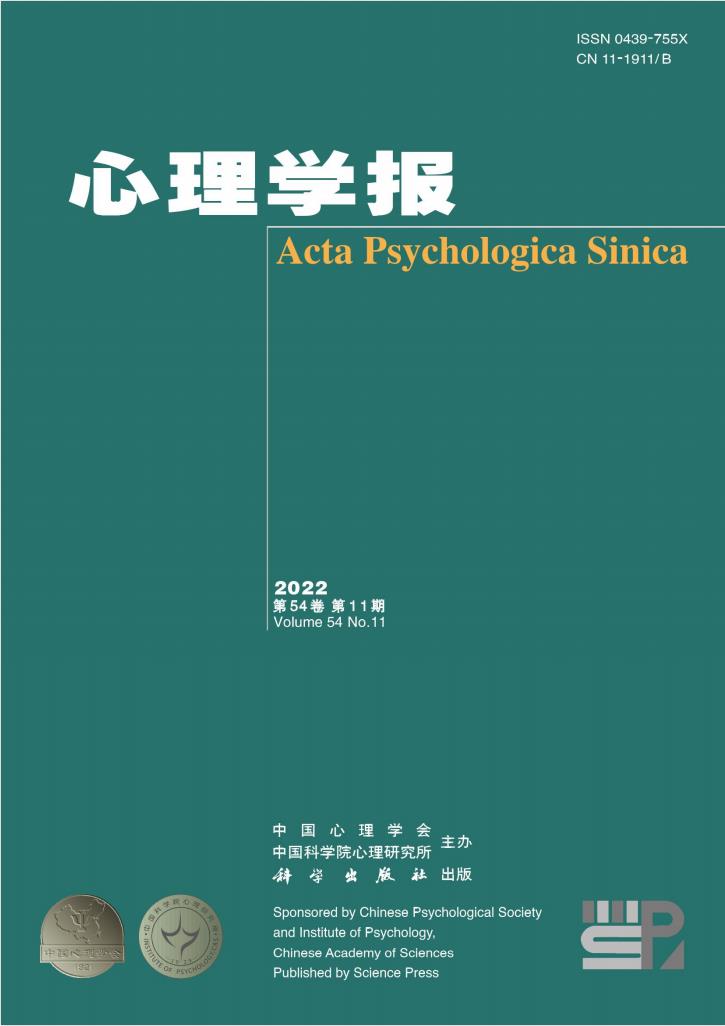动-结构知觉判断的眼动时间动态与注意调节
IF 1.3
4区 心理学
Q3 PSYCHOLOGY, MULTIDISCIPLINARY
引用次数: 1
摘要
注意力如何在解决模糊的感知判断中发挥作用是一个古老的科学问题。理解感知分组、切换、处理速度和感知的过程是解决计算机视觉和涉及三维空间的自动驾驶等应用中重大问题的关键一步。由运动产生的旋转三维结构(SFM)是一种众所周知的双稳态模糊刺激。到目前为止,注意力、眼球运动和深度线索如何调节对3D SFM旋转方向的感知判断仍然是一个悬而未决的问题。早在1925年,亥姆霍兹就提出了由眼睛跟踪信号产生的运动感知(Cavanagh,1992)。Pomerantz(1970)认为眼动在动觉知觉的发生中起着重要作用。此外,神经科学研究支持了眼动和注意力转移的共同神经基础(Grosbras,Laird&Paus,2005)。本研究旨在通过控制外源性视觉线索来研究SFM感知过程中眼动的特征和时间过程,并确定注意力对SFM感知的影响。使用高级眼动分析,我们研究了在明确和模糊的深度线索下的注意力如何调节对深度旋转方向的感知判断。二十二个实验。他们的任务是通过用左手或右手拇指按下鼠标的左键(用于俯视图中的顺时针CW感知)或右键(用于CCW感知)来指示3D SFM的旋转方向。通过30个直径为0.2°的相干移动点以及平均速度为5°/s的不同半径的椭圆轨迹,创建了一个由运动产生的计算机模拟结构(3D旋转球体)。发光点随机分布在5°×5°的球形区域。在使用Bonneh、Adini和Polat(2015)和Hermens&Walker(2010)的方法进行的明确深度下。统计分析表明,在模糊线索下对旋转方向的感知判断比在模糊条件下更快、更自信。对于微扫视,在感知不明确的3D旋转期间的峰值速度和振幅高于在不明确的旋转期间的。扫视持续时间无显著差异。当参与者将SFM判断为顺时针(左)旋转时,当做出逆时针判断时,他们向左的微加速度明显高于向右的微加速度,反之亦然。在无歧义条件下,在150~400ms和500~970ms的时间窗口中,CW CW和CCW CCW之间存在显著差异。相反,在700~950ms的时间窗中,歧义条件(AMB CW和AMB CCW)的差异最大,这表明注意过程的时间是额外的。我们对3D旋转的模糊和毫不含糊的感知判断的时间动力学的发现表明了处理的两个阶段。首先,三维结构施工中刺激开始后150~200ms初始阶段的局部速度计算。其次,视觉处理将局部运动矢量流与旋转方向的整体感知判断结合起来。这种模棱两可的情况需要更长的时间。当旋转是明确的时,在SFM的3D旋转的感知判断过程中,注意力促进在更高级别的处理中加速。本文章由计算机程序翻译,如有差异,请以英文原文为准。
Temporal dynamics of eye movements and attentional modulation in perceptual judgments of structure-from-motion (SFM)
How attention plays a role in resolving ambiguous perceptual judgments is one of the age-old scientific questions. Understanding the processes of perceptual grouping, switching, processing speed, and awareness is a key step towards solving significant problems in applications such as computer vision and automatic driving involving three-dimensional space. The rotating three-dimensional (3D) structure from motion (SFM) is a well-known bistable ambiguous stimulus. Thus far, it is still an open question how attention, eye movements, and depth cues modulate perceptual judgments of rotating directions of a 3D SFM. As early as 1925, motion perception resulted from eye tracking signals was proposed by Helmholtz (Cavanagh, 1992). Pomerantz (1970) claimed that eye movement plays an important role in the occurrence of kinesthetic perception. Furthermore, neuroscience studies has supported a common neural basis for eye movement and attention transfer (Grosbras, Laird & Paus, 2005). The current study aimed to investigate the characteristics and the time course of eye movements during SFM perception by controlling exogenous visual cues and ascertain the effect of attention on SFM perception. Using advanced eyemovements analysis, we investigated how attention under both unambiguous and ambiguous depth cues modulate perceptual judgments of rotation directions in deepth. Twenty-two experiment. Their task was to indicate the rotation directions of 3D SFM by pressing the left (for clockwise CW percept from top view) or the right key of a mouse (for CCW percept) with their left or right thumb. A computer simulated structure-from-motion (a 3D rotating sphere) was created via 30 coherently moving dots with 0.2° diameter each along with an elliptical trajectory of different radii at a mean velocity of 5°/s. The luminant dots were randomly distributed in a spherical area extended 5°×5°. Under unambiguous depth conducted using methods from Bonneh, Adini & Polat (2015) and Hermens & Walker (2010). The statistical analysis revealed that perceptual judgments of rotation directions under unambiguous cues were faster and more confident than those under the ambiguous conditions. For the micro-saccade, peak velocity and amplitude were higher during perception of unambiguous 3D rotation than those during the ambiguous rotations. There was no significant difference in saccade duration. When participants judged the SFM as rotation of clockwise (left), their microsaccade rate towards left was significantly higher than that towards right and vise versa while the counter-clockwise judgment was made. Under the unambiguous condition, significant differences between CW-cw and CCW-ccw were found during time widows of 150~400 ms and 500~970 ms. In contrast, ambiguous conditions (AMB-cw and AMB-ccw) differed most during 700~950 ms, which indicated extra time of attentional processes. Our findings of temporal dynamics of the ambiguous and unambiguous perceptual judgments of 3D rotations indicated two stages of processing. First, local speed calculation in three-dimensional structure construction during initial period of 150~200 ms after stimulus onset. Second, visual processing binds local motion vector flows to the overall perceptual judgment of rotation directions. The ambiguous conditions took longer time. When rotations were unambiguous, attentional facilitates during perceptual judgment of 3D rotation of SFM speed up in the higher-level processing.
求助全文
通过发布文献求助,成功后即可免费获取论文全文。
去求助
来源期刊

心理学报
Psychology-Psychology (all)
CiteScore
1.70
自引率
13.30%
发文量
1612
期刊介绍:
Acta Psychologica Sinica (ISSN 0439-755X) is a scholarly journal sponsored by the Chinese Psychological Society and the Institute of Psychology, Chinese Academy of Sciences, and published monthly by the Science Press.
Acta Psychologica Sinica has been included in many important national and international indexing systems such as SCOPUS (Elsevier), ESCI (Web of Science), PsycINFO (APA), CSCD. It is the flagship journal of the Chinese Psychological Society that publishes peer-reviewed original empirical studies and theoretical articles spanning the entire spectrum of scientific psychology.
Acta Psychologica Sinica publishes high-quality research that investigates the fundamental mechanisms of mind and behavior and aims to deliver scientific knowledge to enhance our understanding of culture and society. It welcomes submissions of manuscripts reporting research that is up-to-date, scientifically excellent, and of broad interest and significance.
 求助内容:
求助内容: 应助结果提醒方式:
应助结果提醒方式:


